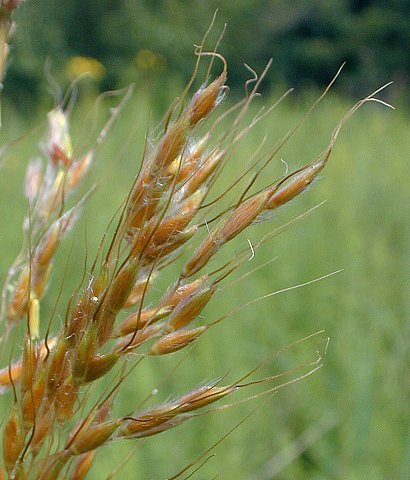A writhing mass of … Indiangrass seed?
A small group of FMR volunteers recently trooped out to a prairie at Pine Bend Bluffs Scientific and Natural Area (SNA) to harvest seed from a native prairie remnant. We had burned this particular patch of original prairie this spring, resulting in greater grass and flower seed production and viability. So were out to take advantage of this bounty for broadcasting in other parts of the SNA.
After a lovely and productive evening, we had a nice harvest of seed from a dozen different species. There was a great abundance of Indiangrass (Sorghastrum nutans) seed, which is especially fun to gather due to its long hairs or awns that give it a very silky feel.
But the dewy fall air meant that much of the seed was damp. Dampness begets mold which kills seed, so it was important to dry it out. The silky hairs on the Indiangrass seed made it especially moist, so tI spread those in the sun first then continued to sort through the other seed.
For an FMR ecologist, this isn't a routine task but it is an annual activity. And over the years, I've developed an idea of what to expect during this process: Not much. Normally, I spread the seed in the sun, and it sits there, quietly drying.
But not this seed. It started to move.
At first, I figured there must be a couple insects rustling about. But upon closer inspection, I found a lone little crab spider – which couldn't begin to account for the way the entire seed pile was writhing! At this point, it looked more like a pile of insects than a pile of seeds. ... And it was talking – emitting a low mutter of scratching, popping noises.
Then it hit me: the seed is indeed moving, just like it's supposed to. Those wonderful silky bristles or awns have a function beyond being nice to touch. They're hygroscopic, meaning they absorb moisture from the air. This happens unequally, so when one side of the awn absorbs more than the other, it twists. When the seed is on the ground, this twisting action helps it work its way into the soil.
The classic example of this process is porcupine grass, which has a very long awn, and a very sharp seed tip, that often twists into your socks rather than the soil. But many other grass species have awns on the seeds that help them transport on the wind or drill into the soil. It made sense that the silky hairs on Indiangrass would serve that same function. Nevertheless, witnessing these special adaptations first-hand felt like an exciting discovery.
You may not have access to your own pile of drying Indiangrass seed, so I invite you to watch the video above. Be sure to turn your volume way up to hear the crackling! (Minnesota Seasons also has an amazing time-lapse video of a single Indiangrass seed in motion.)

Indiangrass's silky hairs or awns make it fun for volunteers to gather, and ultimately help the seeds drill into the soil. (Please note that gathering seed from such natural areas is not normally allowed. This seed is critical for future habitat restoration efforts. If you'd like to volunteer to collect native seed or assist with the next restoration season at Pine Bend, let us know! Email FMR Volunteer Coordinator Amy Kilgore, volunteer@fmr.org.